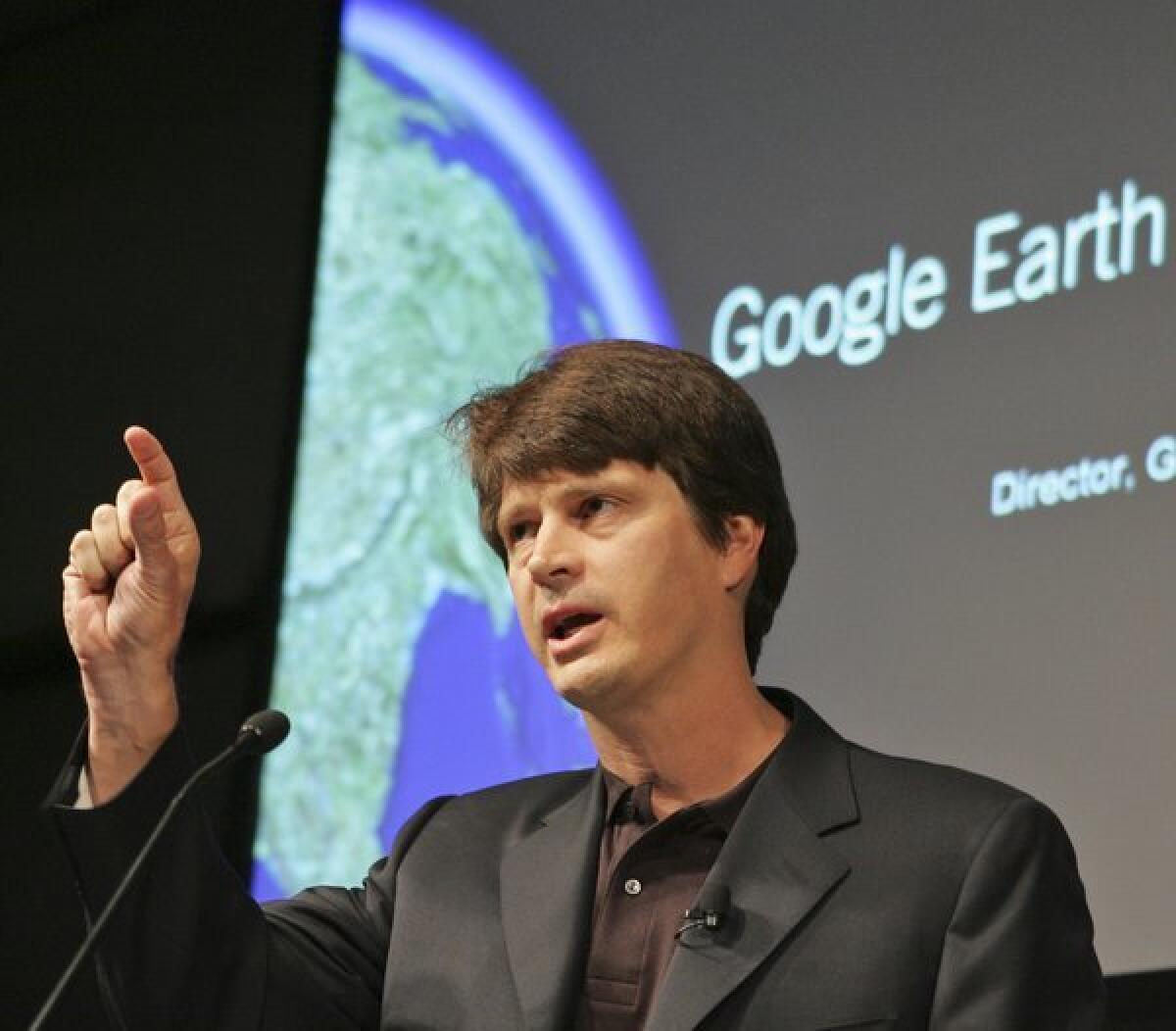Explore the world’s limits via Google’s John Hanke

- Share via
When Silicon Valley wizard John Hanke developed Google Earth a little more than a decade ago, he put advanced, interactive mapping technology in the hands of consumers.
It was a major breakthrough, but Hanke has moved on since then. As director of Google’s Niantic Labs, he masterminded Field Trip, an app that provides real-time, location-based information about shops, buildings and services. It’s available for smartphones and tablets.
When used used in conjunction with Google Glass, expected to be released by the end of the year, the Field Trip app will be accessible to by voice-activated, futuristic spectacles, thereby freeing users’ hands. Recently, we explored with Hanke what this means to travelers.
How does Field Trip improve on traditional travel guides?
Field Trip is a tool for people who want to experience the best of the world no matter where they are. It allows you to be more spontaneous. You can’t always plan everything in advance. How many times have you rushed out on a trip only to realize that you haven’t done as much research as you wished? Or found yourself on a business trip with extra time and no itinerary?
Field Trip steps in to tell you about the best, most interesting stuff that’s been written about by leading curators on the Web, based on where you are right at that moment. You don’t have to plan or search in advance. Just look at the Field Trip cards as they pop up or browse the “nearby” list. You’ll find options for dining, shopping and just plain exploring. It’s very freeing. You can just go, and Field Trip will keep you on track.
Can anyone master it?
Yes. You just read the cards. You can flag the ones you like and tailor the list of publications to your taste. But the basic user interface is very, very simple.
What about the effect of Field Trip on personal discovery? In a sense, couldn’t it obviate the need to travel?
Well, there is nothing wrong with armchair travel. I’ve spent many hours exploring the peaks of the Himalayas and the rivers of the Amazon using Google Earth. But Field Trip is about being there. It’s like having big signs pointing out the best, most interesting places everywhere you go.
So it’s more about helping people get the most out of their real travel, not a virtual substitute.
What role does it play — good or bad — in globalization?
I think of Field Trip as the antidote to globalization in the sense that it frees you from having to make safe choices about what to do and where to go based on recognized brands. It turns you on to the secret places only locals know about and is eager to tell you about lore and history. It’s a way to truly appreciate where you are, whether it’s your hometown or some place new. To me, that’s the opposite of globalization. Maybe it’s a tool for localization.
What will Google Glass add to the mix?
We’ve all had the experience of missing out on something amazing because we were messing around with our phones instead of paying attention. It’s a problem if your goal is to connect with what’s around you. And we definitely want to connect you in a deeper way with the real physical world.
We are pushing current technology as hard as we can by giving automatic notifications that pop up without users having to stop, take phones out of their pockets or purses, open an app and press some buttons on a user interface.
We read the Field Trip cards to you audibly so you don’t even have to look at your phone to get the info. With headphones or Bluetooth, the phone can stay in your pocket and your eyes can stay open and focused on what’s around you.
What’s the next step?
The hardware will get out of the way even more. Google Glass is a vision for what can be. We are building apps with that future in mind.
What else are you working on at the cutting edge of mapping technology?
Everything we do uses cutting-edge mapping technology. The first wave was re-creating the world digitally via Google Earth. The second wave is using that map to very precisely find your location when you want to access information from your mobile device.
GPS is a start, but it’s not the complete answer. Google has invested in other technologies that can make that location fix even more accurate and extend it to places GPS can’t reach, such as inside of buildings.
More to Read
Sign up for The Wild
We’ll help you find the best places to hike, bike and run, as well as the perfect silent spots for meditation and yoga.
You may occasionally receive promotional content from the Los Angeles Times.





